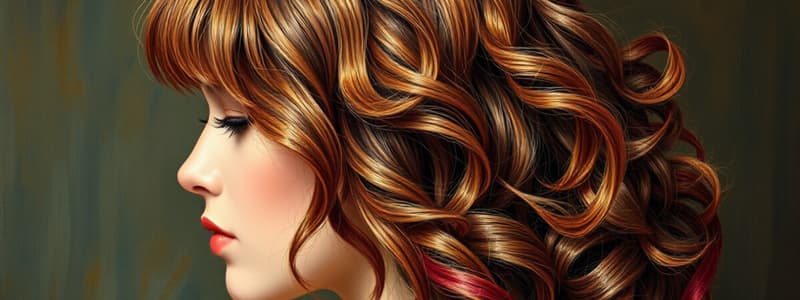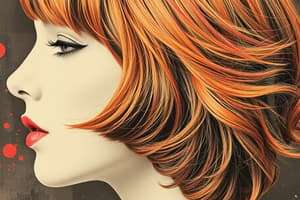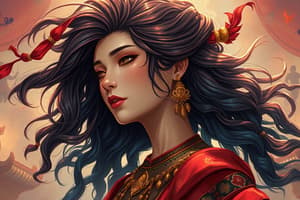Podcast
Questions and Answers
What is the primary purpose of hair coloring?
What is the primary purpose of hair coloring?
- To change the texture of the hair
- To add color to the hair (correct)
- To enhance hair growth
- To remove hair completely
Why is knowledge of hair structure important for barbers?
Why is knowledge of hair structure important for barbers?
- It determines how much to charge for services
- It is unrelated to hair services
- It affects the quality and success of hair color services (correct)
- It influences the type of tools used
Which of the following is NOT a characteristic barbers should analyze before hair coloring?
Which of the following is NOT a characteristic barbers should analyze before hair coloring?
- Hair density
- Hair length (correct)
- Hair porosity
- Hair elasticity
What can improper use of hair coloring chemicals lead to?
What can improper use of hair coloring chemicals lead to?
What sparked the trend of coloring men's facial hair in the 1880s?
What sparked the trend of coloring men's facial hair in the 1880s?
How does understanding the laws of color benefit barbers?
How does understanding the laws of color benefit barbers?
What was a common practice in barbershops in the 1880s regarding men's facial hair?
What was a common practice in barbershops in the 1880s regarding men's facial hair?
What is hair lightening defined as?
What is hair lightening defined as?
What has contributed to the increase in demand for beard coloring?
What has contributed to the increase in demand for beard coloring?
Which substance was NOT mentioned as part of early hair dye formulations?
Which substance was NOT mentioned as part of early hair dye formulations?
Flashcards are hidden until you start studying
Study Notes
Historical Context of Hair Coloring
- Hair coloring has been practiced for thousands of years, symbolizing power and mysticism in early cultures.
- Evidence of early hair coloring techniques includes tools and dyes found in Egyptian tombs.
- In the 1880s, American men utilized barbershops for beard and mustache dyeing, often resulting in unusual hues due to the chemical composition of early products.
Development of Hair Coloring Technology
- The first synthetic dyes emerged in 1883, enhancing the safety and effectiveness of hair coloring processes.
- Modern barbers are increasingly expected to provide hair coloring and lightening services to meet client demands.
Importance of Studying Hair Coloring and Lightening
- Mastery of hair coloring services can lead to a dependable and profitable clientele for barbers.
- Establishing client loyalty and confidence relies on knowing when to recommend hair coloring services.
- A solid understanding of hair structure, color theory, and hair coloring techniques is essential for successful service delivery.
- Knowledge of chemical use in hair coloring is crucial to prevent client injuries and ensure safe practices.
Hair Characteristics and Coloring
- Six specific hair characteristics must be analyzed prior to hair coloring services to determine the hair's structure and condition, which directly influence service quality and success.
- Understanding these characteristics enables barbers to tailor their services effectively and address client needs.
Studying That Suits You
Use AI to generate personalized quizzes and flashcards to suit your learning preferences.





